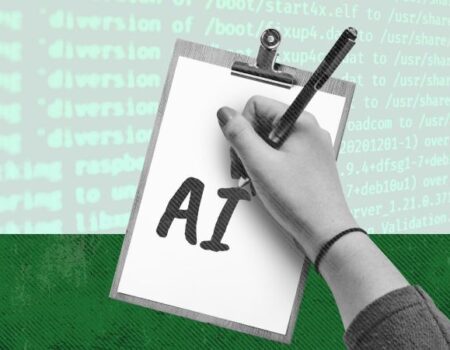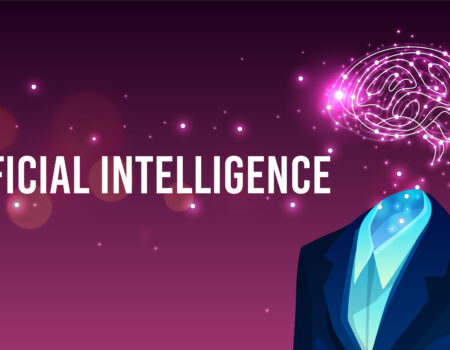Unlocking High-Value GenAI Use Cases for DAM: Beyond Tagging
Generative AI (GenAI) has undeniably revolutionized the marketing landscape, from automating customer interactions to streamlining content creation. However, while much attention has been on chatbots and blog generation, a quieter yet equally impactful transformation has been unfolding in Digital Asset Management (DAM). What began as an effort to address longstanding challenges with asset findability and reuse has now evolved into a suite of high-value use cases. These innovations will propel us far beyond simple asset tagging, unlocking the full creative potential of your DAM solution.
Asset Tagging and Retrieval
One of the foundational principles of Digital Asset Management (DAM) is asset reuse. Why invest time, resources, and costs in recreating assets that already exist? Despite this clear value proposition, achieving effective asset reuse has remained elusive for decades. The reason is straightforward: images, videos, audio files, and other rich media assets are not self-describing. Unlike text-based objects, which can be searched relatively easily, digital assets rely heavily on metadata for retrieval.
Until recently, meaningful metadata had to be manually created by humans. This process involved individuals examining assets and entering data into predefined fields, ideally adhering to the organization’s standard taxonomy and ontology. However, relying on humans for this task presents significant challenges. It is nearly impossible for one person—or even a team—to consistently, accurately, and repetitively tag assets.
As a result, organizations often face a dilemma: either require their creative teams to tag assets during ingestion into the DAM system—an activity that is universally resented and frequently poorly executed—or hire librarians or specialized teams to attribute assets post-ingestion. Due to cost constraints or user reluctance, most organizations struggle to generate sufficient metadata, hindering precise asset retrieval and effective reuse.
Generative AI (GenAI) addresses this challenge in two transformative ways. First, it eliminates the dependency on humans to manually tag or apply metadata to assets. A specific branch of artificial intelligence called Computer Vision enables computers to interpret images, videos, and other rich media assets. By leveraging Vision-Language Models (VLMs), we can now automatically generate descriptive text for images and videos. Additionally, audio files—or audio tracks within videos—can be converted into text effortlessly.
This approach provides a virtually limitless, inexhaustible, and cost-effective resource for tagging digital assets. These models can be fine-tuned to generate specific metadata unique to your organization or intellectual property, such as color codes, product IDs, or character versions. Furthermore, they can be constrained by your organization’s unique taxonomy and ontology, ensuring consistency and relevance.
Moreover, GenAI excels in asset retrieval, enabling users to employ natural language queries to quickly narrow down search results. This capability ensures highly accurate and efficient asset retrieval, empowering users to locate the exact assets they need.
The outcome? We can now solve the asset reuse problem, ensuring that DAM users can find existing assets quickly, easily, and comprehensively.
Beyond Tagging: Streamlining Asset Creation
That’s a comprehensive overview of how GenAI addresses asset findability and reuse. Many Digital Asset Management (DAM) platforms have begun integrating GenAI to intelligently tag assets and enable natural-language searches. However, what we’re now witnessing is an entirely new set of use cases—beyond tagging and retrieval—that will streamline and accelerate the creation of new assets and improve the asset review process.
Asset Ideation
One of the most powerful use cases we’re seeing is asset ideation. With this approach, creatives can upload sample assets or intellectual property and provide parameters for new asset concepts using a simple, natural language interface. This information is then processed by a Computer Vision model, which rapidly generates a broad array of asset concepts.
Users can further refine these results through a chat-like interface, quickly and easily ideating to identify concepts that align with their goals.
We emphasize the word “concepts” here because GenAI excels at ideation, not final content creation. While Computer Vision models can generate countless visual assets, most consumers can easily identify AI-generated content, which often lacks the authenticity of real photos or images.
The key takeaway is to leverage GenAI for what it does best: generating an array of concepts to help creative teams conceptualize new assets for campaigns, photo shoots, or other projects. From there, your creative team can produce the final assets. GenAI isn’t about replacing creative resources—it’s about empowering them to be more effective and efficient, ultimately boosting workflow efficiency.
Asset Localization
When we think about asset localization, translation often comes to mind. However, localization goes far beyond language. For global companies, visual assets must align with regional preferences, cultural nuances, and functional needs specific to certain segments or geographies. For text-based assets, this might involve translating to the local language, adjusting currencies, or converting units of measurement. For images and videos, it could mean modifying color schemes or incorporating local attire and settings.
GenAI can assist with asset localization in two distinct ways. First, it can apply localization policies and guidelines to existing assets, flagging potential issues or identifying regions, countries, or demographics where an asset should—or should not—be used. This additional information can be added to metadata, further enriching the asset.
Second, similar to the ideation use case, GenAI can help users create localized concepts and ideate new versions of assets that reflect localization policies and guidelines. This ensures that assets are culturally relevant and resonate with target audiences, enhancing personalization and driving better ROI.
Brand Compliance
A key use case for GenAI is assessing assets for brand compliance, which can significantly streamline the creative review and approval process. When new assets are created and uploaded to a Digital Asset Management (DAM) solution, a GenAI model can apply brand policies and guidelines to determine whether an asset is fully compliant.
If an asset fails to meet compliance standards, the model can identify the specific reasons for non-compliance and even provide recommendations to address these issues.
The primary benefit here is that, as assets move through the review and approval workflow, approvers can be confident that the assets are already brand-compliant, saving valuable time and reducing bottlenecks in the process.
Intellectual Property
For organizations that utilize third-party intellectual property (IP) in their assets and designs, understanding what IP is being used and ensuring proper usage rights is mission-critical. GenAI can play a pivotal role in identifying when an asset contains third-party IP and validating whether the organization has the contractual right to use it.
This information becomes valuable metadata that can be automatically generated and applied to assets within the DAM solution. Additionally, this process can be run iteratively on existing assets or invoked as new assets are added to ensure that IP rights are never compromised.
By automating this task, organizations can mitigate risks associated with improper IP usage while enhancing the accuracy and completeness of their asset metadata.
Partner with our Digital Marketing Agency
Ask Engage Coders to create a comprehensive and inclusive digital marketing plan that takes your business to new heights.
Contact Us
This Isn’t Plug and Play
As a final thought—and something we’ll explore further in future articles—GenAI models are only as effective as the data they’ve been trained on. In the early days of AI, custom models were often required to accurately tag assets or assess brand compliance.
More recently, advancements like Retrieval-Augmented Generation (RAG) have enabled organizations to leverage publicly available commercial models for these use cases. However, some scenarios may still require fine-tuning to optimize accuracy and model outputs.
The critical takeaway is that achieving accurate, meaningful results with GenAI—even for basic tasks like asset tagging—requires careful consideration of model inputs and fine-tuning. This level of customization means that GenAI integration isn’t simply an out-of-the-box DAM feature.
That said, the potential benefits are immense for organizations that get it right. By leveraging GenAI effectively, businesses can unlock the full potential of their Digital Asset Management (DAM) solutions, driving greater personalization, improving content creation, and maximizing operational efficiency.







